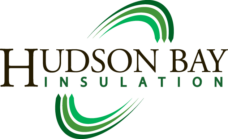
02-11-25 Workplace Bullying and Harassment
Standing Against Workplace Bullying & Harassment
Bullying and harassment aren’t just issues left behind in school—they can and do occur in workplaces, including job sites. According to a 2024 survey by the Workplace Bullying Institute, 32% of Americans experience workplace bullying, while an additional 19% witness it. These behaviors create toxic environments that harm morale, productivity, and safety.
At Hudson Bay Insulation we are committed to fostering a workplace where everyone feels respected, valued, and safe. That means recognizing, addressing, and eliminating bullying and harassment.
Bullying vs. Harassment
- Bullying - Unwanted verbal, physical, or psychological behavior directed at an individual or group. While not always illegal, it is always unacceptable.
- Harassment - Inappropriate conduct based on protected characteristics (such as race, gender, religion, or age, etc.). Making offensive jokes, using slurs, epithets, or derogatory name-calling. Harassment is prohibited under federal law.
Unlawful harassment, as defined by the U.S. Equal Employment Opportunity Commission, includes offensive jokes, threats, intimidation, or physical actions based on protected characteristics when the behavior creates a hostile, abusive, or intimidating environment.
Key Difference - While harassment is tied to protected statuses, bullying can happen to anyone. Regardless of the distinction, both behaviors have no place in our workplace.
Examples of Workplace Bullying
Bullying can take many forms, including but not limited to:
- Engaging in physical assaults, threats, intimidation, ridicule, or public humiliation.
- Insulting, mocking, name-calling, or belittling others, whether in private or in front of others.
- Displaying offensive images, symbols, or objects.
- Intentionally excluding someone from meetings, events, or workplace interactions.
- Withholding essential information or resources to hinder a coworker’s success.
- Taking undue credit for another person’s work.
- Engaging in excessive, unfair, or targeted criticism.
- Treating employees unfairly based on their job title (e.g., a journeyman mistreating an apprentice.)
Bullying and harassment in the workplace can affect morale and job performance, particularly if the target does not feel they can do anything about it.
Why Workplace Bullying and Harassment Matter
- Impacts on Morale & Performance – Bullying and harassment can lead to stress, anxiety, mental, and physical health issues. Over time, employees may feel forced to leave their jobs, disrupting teams and allowing negative behaviors to persist.
- Safety Risks - A hostile work environment increases the likelihood of overlooked safety protocols, shortcuts, and complacency, raising the risk of workplace incidents and injuries.
- Cultural Damage - A culture that tolerates bullying or harassment erodes trust, teamwork, and accountability, making it harder for everyone to succeed.
What Can You Do
If you experience or witness workplace bullying or harassment, take action immediately:
- Speak Up - If it’s safe, address the behavior directly with the individual. Use respectful and assertive communication. You may also contact your supervisor or a member of the safety team for guidance.
- Document Incidents - Keep a detailed record of what occurred, including dates, times, witnesses, and specifics of the behavior.
- Report the Behavior – Report the behavior to the HR Administrator Crystal Loeffelbein, (206) 763-9484 or Hr@hudsonbayins.com.
- Support Your Team - If you witness bullying, step in if it’s safe or report the incident. Solidarity can help create a culture of respect. There is no place for bullying or harassment at Hudson Bay Insulation.
Remember This!
Words and actions matter—choose to lift others up rather than bring them down!
